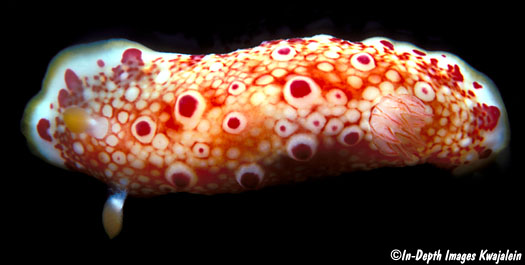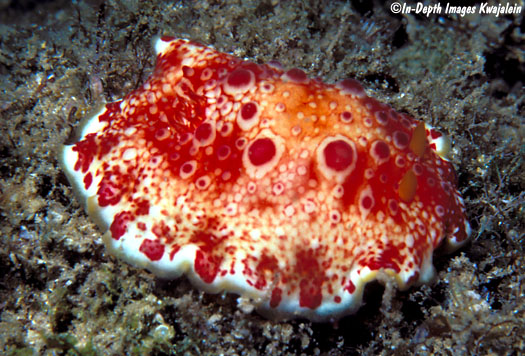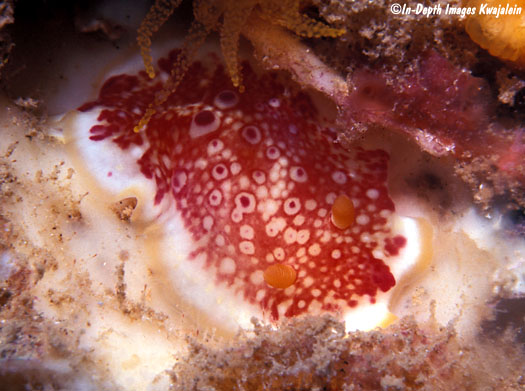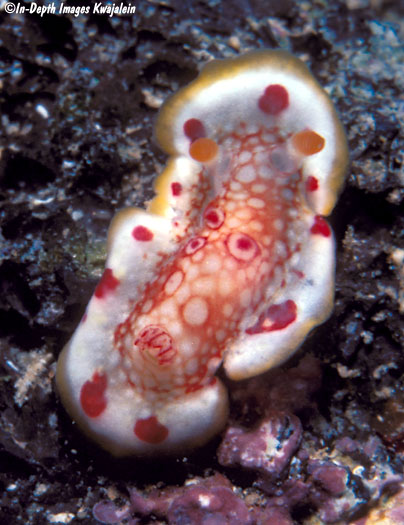
This apparently undescribed species has been recognized in Hawaii for quite a few years. It was first figured in Kay (1979) as Chromodoris petechialis, then by Bertsch & Johnson (1981) under the same name. The species name seemed appropriate. Webster's Ninth New Collegiate Dictionary defines "petechia" as "a minute reddish or purplish spot containing blood that appears in the skin or mucous membrane." The bright red spots surrounded by rings of white on the animals below are distinctly raised and look sort of like bulging blood blisters. Alas, Gould's original description of Doris petechialis mentions only the red spots and yellow margin, not the reddish reticulation between the dorsal petechia. For those of you with a collection of old National Geographic magazines, Chromodoris petechialis is likely the pair of animals figured on page 512 of Zahl (1959) (and posted on the web on the Sea Slugs of Hawaii site). It fits the original description pretty well. The only point that raises some question is that several other nudibranchs figured in this article on "Unsung beauties of Hawaii's coral reefs" on pages 520, 522, and 523 are not found in Hawaii at all. Could the red-spotted pair have been photographed elsewhere as well?

Goniobranchus sp. e132 was not especially uncommon on a variety of reefs around Oahu. We have records from Makua, Makua Ledge, Makaha, Nanakuli, Pupukea, Ewa, and Kokohead, among others. It could be found exposed in ledges and small caves by day or night, and seemed to prefer the deeper ranges of our typical dive sites. We originally thought this was a Hawaii endemic, but subsequently found it in the Marshall Islands, the Solomons and the Philippines, and Gosliner et al (2018) reports it as widespread in the Indo-Pacific.

The specimen below appeared to be eating the white sponge it is resting on.

A young specimen shows less development of the dorsal red pustules.

Created 20 April 2009
Updated 1 July 2012